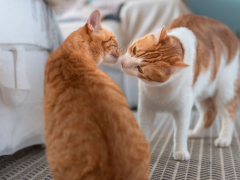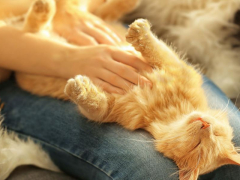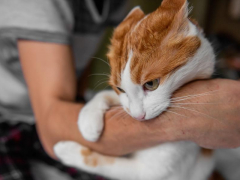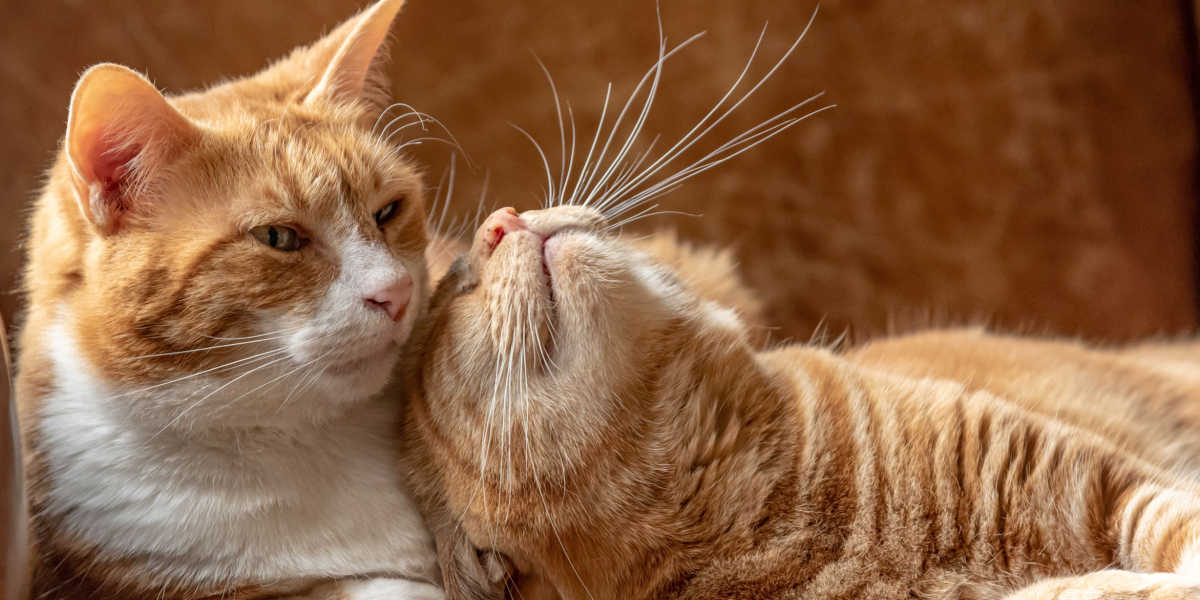
Cats tend to be solitary creatures and are quite happy being the only cat in the house. But fear not, that doesn’t mean that they can’t bond with other cats. If you have found your way here, you have likely introduced a new cat to your resident cat.
You might have already discovered that the process will require time and patience. But how will you know if your cats are starting to get along? By the end of this article, you will know the signs to look out for that will give you the reassurance that your cats are developing a harmonious relationship.
1. They Enjoy Spending Time Together
Cats that get along will seek out each other’s company and want to spend time together. You might find them having fun and playing together with their toys. Or they might sit side by side next to the window and watch the world go by.
Perhaps they will both come and laze beside you on the sofa as you wind down for the night. If your cats enjoy each other’s presence, that is a positive sign!
2. They Approach Each Other With Their Tails in a Raised Vertical Position
When a cat has their tail in a raised vertical position as they approach another cat, this is a visual signal that indicates their desire to interact. If you see your cats walking toward each other in this way, then you can feel reassured that they are sharing friendly greetings. This is usually followed up with a sniff or mutual rub.
3. They Greet Each Other by Sniffing or Touching Noses
Touching noses is pretty much your cats’ way of saying a friendly hello to one another! They might also sniff each other at the same time. It’s a great way for them to check each other out.
4. They Headbutt and Rub Against Each Other
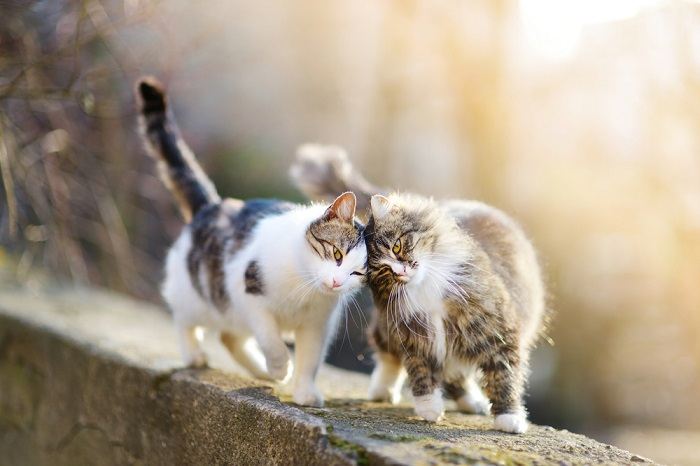
Cats in the same social group rub against each other to exchange their individual scents.
When cats rub against each other, it is known as allorubbing. This is a behavior that you will see between two cats that are on good terms. They tend to rub their heads, cheeks, and flanks. It is thought that doing so allows them to establish a group smell by swapping scents.
5. They Groom Each Other
Cats are known for taking great care when it comes to keeping themselves clean and pristine. However, when cats groom each other (allogrooming), it is more for social purposes rather than cleaning. Usually, they will focus on grooming the head and neck area.
Like allorubbing, mutual grooming allows them to exchange scents and form a collective odor. If your cats are grooming each other in a state of relaxation, it’s a good sign of their shared affection.
6. They Rest and Sleep Together
When cats are sleeping, they are in a vulnerable position. To begin with, your cats might choose to sleep in different rooms. As they become more familiar with each other, you might see them snoozing in the same area, like on the sofa.
The true indicator that they are bonding is if they are in close contact when they sleep. It’s a lovely sight when you find cats snuggled up together as they take a nap and you can rest easy knowing that they have become friends.
7. They Knead Each Other
Kneading, also known fondly as “making biscuits,” is when a cat pushes their front paws against a surface in a steady rhythm, switching between left and right paws. This is usually accompanied by lots of purring. It is thought to be a behavior that is carried forward from kittenhood when the motion would have stimulated milk flow from their mother.
Cats usually knead when they are feeling content and relaxed. You might have seen your cat kneading soft materials, like a cozy blanket. But you might not have realized that they will also make biscuits on other cats with which they have a social bond.
8. They Roll On Their Backs Around Each Other
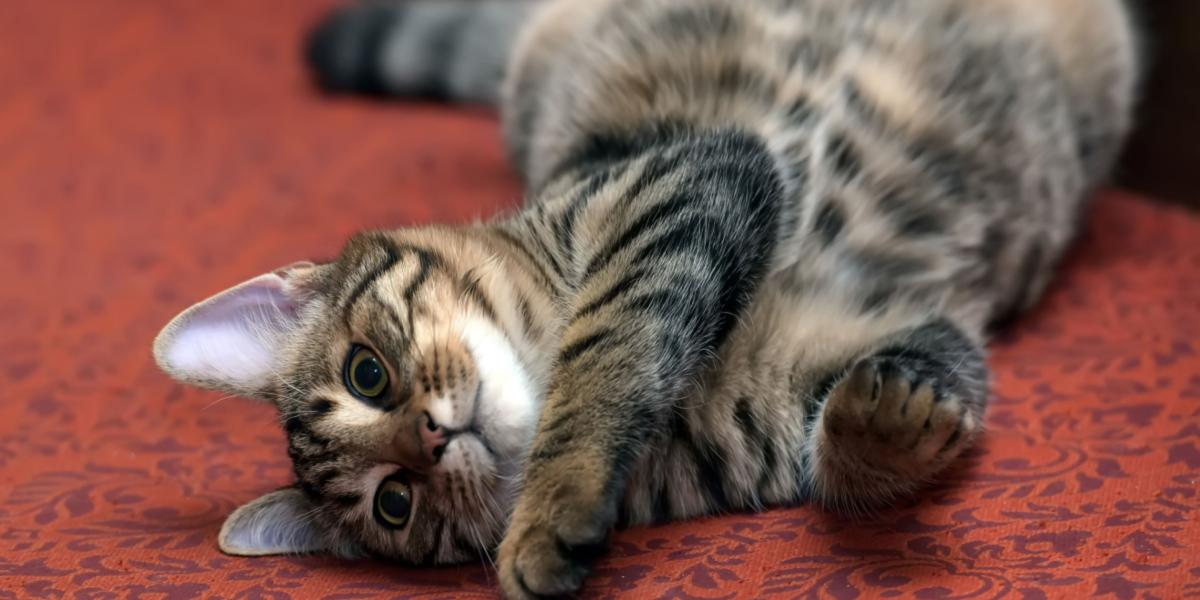
Cats only expose their vulnerable bellies when they are feeling extremely safe, so doing so in the company of another cat means they trust each other.
When a cat rolls on their back, they are exposing their vulnerable soft belly. Cats are more likely to “social roll” when they don’t feel threatened. If one of your cats rolls on their back while stretching their legs out toward the other cat, this can be seen as a friendly gesture. They are trying to say, “Come and play!”
9. They Play Fight
A lot of the time, people find it difficult to tell whether cats are play fighting or fighting for real. Play fighting is usually quiet, with little or no vocalizations. Both cats will take turns chasing and pouncing on the other and claws are kept in. Allow your cats to engage in play fighting as it is a great source of fun and exercise for them!
Cats that are actually fighting will show signs of aggression. They might hiss, growl, and spit angrily. Ears will be flattened and claws extended, while tails swish back and forth. If you see this, it’s best to provide separate spaces for the cats to calm down and regroup.
10. They Don’t Block Each Other From Resources
Cats that don’t get along might sense increased competition for resources, such as litter boxes, food and water bowls, and scratching posts. One might block the other from accessing a particular resource by positioning themselves in the doorway or hallway.
This might be enough to put the other cat off. Or if they try to sneak past, they might be attacked. Blocking resources can be quite a subtle sign of conflict. If you’re not seeing any guarding behavior, then chances are your cats are learning to share and live together.
Quick Tips for Facilitating a Happy Relationship
The introduction process must be carried out slowly and steadily, with great care and patience. Once you have been through the initial steps, take note of the following advice to facilitate and maintain a happy relationship with your cats:
- Make sure there are sufficient resources around the house to reduce competition.
- Provide plenty of hiding spaces, including ones that are high up, so there are safe spots for each cat to retreat to if needed.
- Feed both cats in different areas—being fed side by side can be stressful (most cats will eat together in this way but this is usually because they have no choice).
- Play games and offer treats when they are together so they form positive associations with each other.
- Ensure each cat still receives individual attention and stimulation.
- Use pheromone diffusers, such as Feliway, to ease stress and anxiety.
Final Thoughts
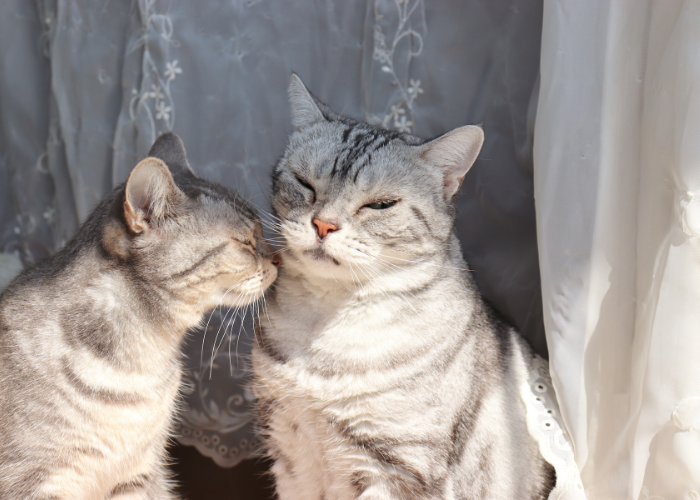
With patience and time, most cats can learn to live together peacefully, and might even become best friends.
Bringing a new cat home and introducing them to your existing cats can be exciting but sometimes stressful. By now, you will be aware of the signs to look out for when two cats are developing a happy relationship.
These vary from the more subtle signs, such as the tail-up approach and nose-touch greeting, to the more obvious, like snuggling together for a nap. If you have observed these, then you know you are making good progress. If you have not, then it gives you the chance to consider how you can help improve the situation.
Also Read: 10 Serious Warning Signs When Introducing Cats
-
Atkinson, T. (2018). Practical Feline Behaviour. Oxfordshire, UK: CAB International
